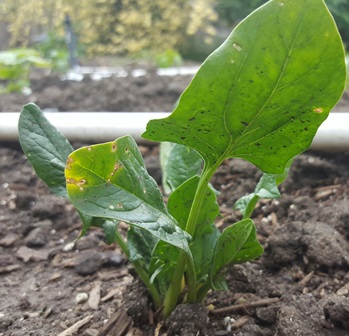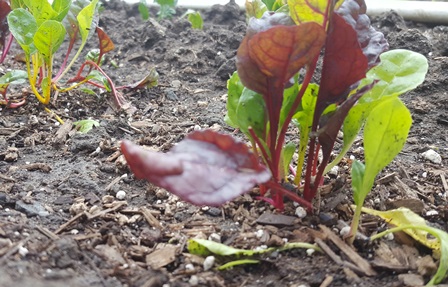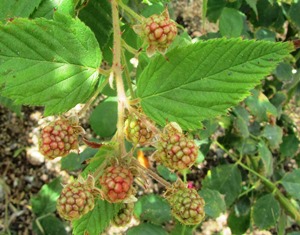The Quiet Beauty of a Winter Garden
There is a quiet beauty in a winter garden. You must endure cold to appreciate it. On my farmette, there’s also fog and wind and misty rain. But as you gaze in mindfulness, the rewards come.
When trees are bare, you can appreciate the beauty of their scaffolding, branching habits, and fruiting spurs. There is an attractiveness about tree bark that is rough or smooth and colored in earthy hues of green, gray, or reddish brown. Bare trunks and branches provide visual interest until blossoms and blooms break in spring.
With pruning done and leaves removed, the roses rest. Birds gather at feeders and frolic in the fountains. Beneath the soft, damp earth, roots are taking in nutrients to prepare the fruit trees for a surge of growth when warmer days arrive.
The garden is a place to conjure memories and ponder life and destiny. Goethe, the German playwright, poet, and novelist wrote that “Sometimes our fate resembles a fruit tree in winter. Who would think that those branches would turn green again and blossom, but we hope it, we know it.”
Winter is the perfect time to contemplate the tap root of your being and to think and and dream and plan for what will blossom in your life when warmth and light returns. French philosopher and author Alfred Camus wrote, “In the depths of winter, I finally learned that within me there lay an invincible summer.”
I have a simple ritual of visiting my winter garden. I prepare a cup of hot water with juice of half a lemon and a tablespoon of honey or sometimes just a cup of coffee or tea. Then with cup in hand, off I go to inspect the fruit trees, the bare grape and berry vines, and the soil turned in raised boxes waiting to receive kitchen herbs. This ritual inspires me and silently powers me up with hope and energy.
Perhaps you have a similar winter ritual. If not, consider checking out my newest nonfiction book, RITUALS FOR LIFE and plant something in the earth or the garden of your psyche that holds the promise of bearing fruit in its own perfect time. Now is the time to greet each new winter day for the blessings it brings and appreciate the stark beauty of Nature.

More than 150 rituals for sound mind, strong body, and meaningful connections to the people around you
Grow Seasonal Greens Now
The cool season of spring is the optimum time to grow seasonal greens for salads and healthy blended shakes. In my kitchen garden, I’ve planted a variety of lettuces, spinach, kale, and chard. Most salad greens are easy to grow also in containers, raised beds, and window boxes when gardening space is limited.
Add compost and aged chicken manure to enrich the soil with nitrogen. Plant heirloom seeds about 1/2 inch in the soil, cover, and water. Within a week or 10 days, you should see the seedlings pop up. The greens will be ready to pick in about 25 days.
Water the plants to keep them hydrated but don’t drown the plants. When you are ready to make a salad, snip the leaves you want with kitchen scissors. New leaves will soon form if the roots are not disturbed and the plant continues to get nutrients and water.

Spinach can be started in seed cell flats and then transplanted into your garden when all danger of frost has passed
SALAD OF FRESH GREENS
1. Snip a variety of greens in the early morning. Wash and thoroughly dry the leaves.
2. Place them in a bowl and crumble on some sharp cheese such as your favorite goat cheese or a Gargonzola (blue-veined, sharp tasting, and crumbly).
3. Add 1/2 cup sugared or candied walnuts.
4. Add some slice red onion and a handful of dried cranberries or chopped dried apricots.
5. Drop into the bowl some slices of a pear such as Bosc (considered the prince of pears).
6. Gently toss the salad and then spritz with red wine vinaigrette prior to plating on pretty salad serving dishes.
* * *
If you love reading about gardening and other farming topics, check out my Henny Penny Farmette series of cozy mysteries that include A BEELINE TO MURDER, THE MURDER OF A QUEEN BEE, and A HIVE OF HOMICIDES.
-
Delicious recipes
-
Farm quips and quotes
-
Tips for gardening and keeping chickens and bees
-
An exciting whodunnit mystery
Get Ready for Blackberry Season
Southwest of the farmette lie the Santa Cruz mountains where blackberries grow wild. I know because I lived in those mountains and for many years hiked the environs of the mountain towns of Ben Lomond, Boulder Creek, Felton.
Nestle in the foothills, Los Gatos maintains Vasona Park where blackberries grow wild along the hiking/biking trail near a creek. I’ve been there several times this summer. Invariably, when I walk the trail in August or September and taste a ripe, freshly-picked blackberry, the sweetness and sprightly flavor evoke happy memories of summers past.
Our Henny Penny Farmette is located an hour and a half north of the Santa Cruz Mountains. Here we are situated in the shadow of Mount Diablo, but we have the kind of climate blackberries love. What is lacking is ample water that the plants need to thrive.
Blackberries require a deep soil and here we have clay (which can suffocate the berries because of the lack of good drainage the roots need). But we’ve helped the berries along by aerating and amending the soil with nutrients and with ground corn cob, aged horse manure, and compost.
Our trailing blackberries grow supported on a trellis. Use a two-wire trellis to avoid bending the canes too severely and to enable intertwining of the canes.
Last year, we planted a few of the semi-erect thornless berry vines. The Evergreen and Thornless Evergreen are commercial varieties and are extremely productive. The berries are large, black, firm, and sweet, pretty much perfect for eating out of your hand or using in a cobbler or pie. You can also make jam with blackberries alone or in combination with other fruits.
Some varieties can be so prodigious and hardy, adapting to the wild, that they are considered in some states and counties as noxious weeds, or pests. One species is the Himalaya cultivar. Its berries are shiny, black, about 1-inch long and the vines produce fruit with medium to large seeds. It quickly spreads and is difficult to control and eradicate.
The season for ripened blackberries is still a few weeks away, but watch for vines in the wild or plant some in your garden. Fall to spring is the best time for planting most berries.
Check with your local garden center for the right time to plant in your garden zone. Blackberries are perennial so the roots survive for many years, especially if the soil is loamy, well drained, and located in full sun to partial shade. For more information, see http://www.weeksberry.com/berryfiles/files/Blackberry.pdf.
 Facebook
Facebook Goodreads
Goodreads LinkedIn
LinkedIn Meera Lester
Meera Lester Twitter
Twitter




